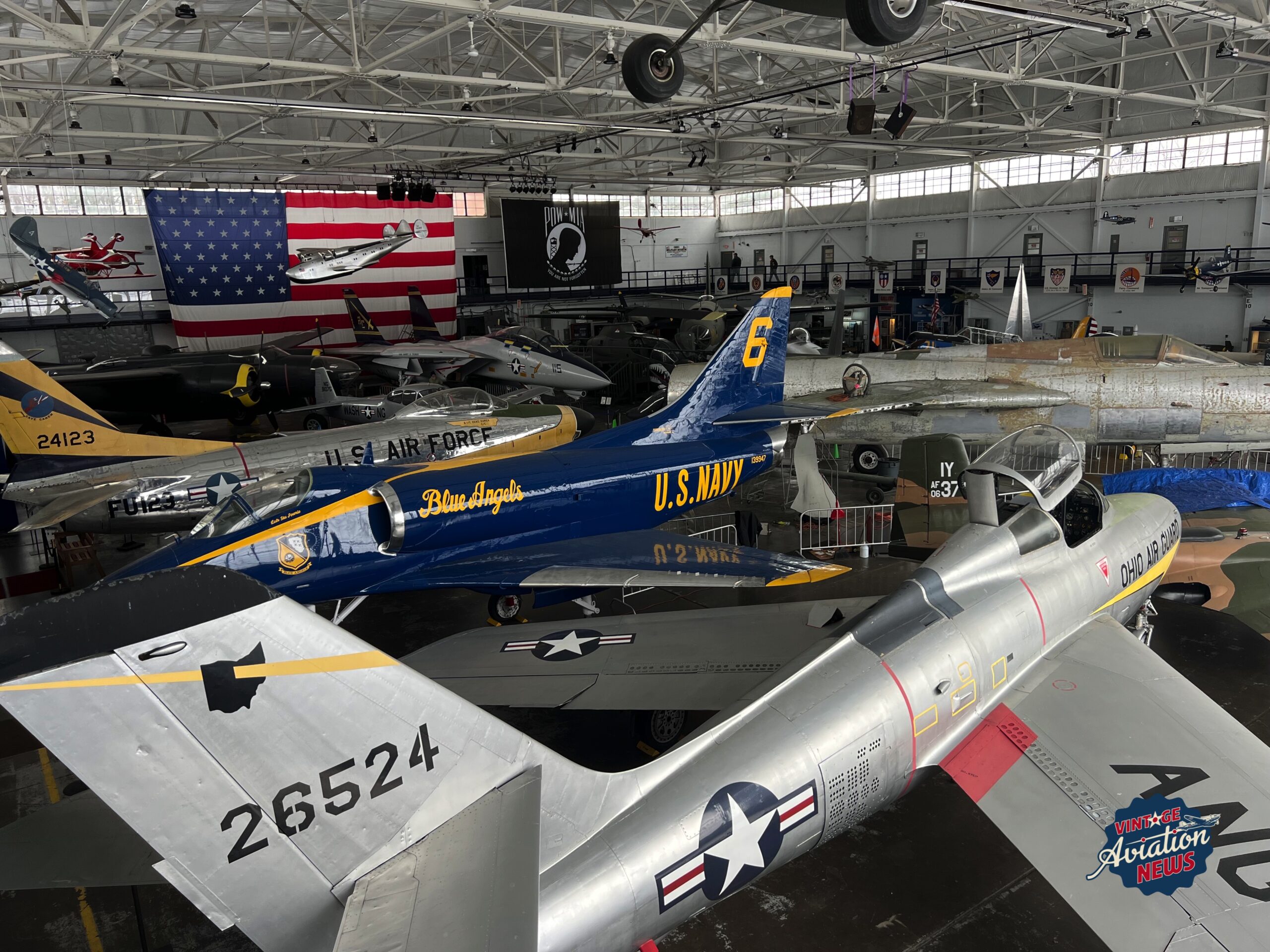The Military Aviation Preservation Society’s museum, better known as the MAPS Air Museum, maintains a marvelous collection of more than sixty historic aircraft and associated aeronautica at their facility within the bounds of Akron-Canton Airport just south of Akron, Ohio. There are numerous engaging educational displays and interactive exhibits spread across the two main galleries, which also include an impressive library and historical archive.
MAPS’s Executive Director, Kim Kovesci, and curator Rich Ashely generously took the time to host us during our recent visit, taking us on a tour of their impressive facility. MAPS is clearly well-run, which is not surprising given the team involved. It doesn’t hurt either that Kovesci, a U.S. Navy veteran and retired businessman, spent years of his professional life running and restructuring several different corporate enterprises, experience which has proven invaluable to his successful tenure at MAPS.
In describing MAPS, Kovesci stated: “Our museum offers a wide array of exhibits from the first airships, World War I, World War II, Korea, and Vietnam to the present day. A broad collection of aircraft adorns our exhibits, ranging from the 1908 Martin Glider, the first heavier-than-air aircraft to carry a woman aloft, to the massive F-14 Tomcat.”
Adding to this, Kovesci noted: “We are a hands-on museum allowing visitors to sit in a Russian MiG-17 fighter, control a World War II anti-aircraft gun, tour a Goodyear blimp gondola, and more. Active restoration projects allow visitors to witness planes being brought back to life, including several Cold War-era fighters, and one of the last World War II B-26 Marauders bombers known to exist. Many artifacts, uniforms, and original artworks adorn this attraction. In addition, it now houses the collection of the Ohio Military Museum. There is also a large gift shop. Handicap accessible, and Guided or Self-Guided tours are available. Group Rates apply for tours of 15 people or more.”
Some consider the MAPS Air Museum to be a “working” museum, since many of the aircraft they receive arrive in a dilapidated state, requiring the organization’s volunteers to devote significant energy into their renovation. This effort ranges from relatively simple refurbishment all the way up to complete rebuilds. Indeed, the extremely rare Martin B-26 Marauder (40-1459) which the museum has on display, one of just a handful of complete survivors, took more than 13,500 hours to restore. As some will know, in 1971, this aircraft was one of three such airframes which the late David Tallichet organized for recovery from a remote location near the Smith River, the so-called “Million Dollar Valley”, in British Columbia, Canada. On January 16th, 1942, the Marauders, low on fuel, had force-landed at the site during a ferry flight from what is now Joint Base Elmendorf, in Anchorage, Alaska.
Currently, museum volunteers are rebuilding an FG-1D Corsair under the supervision of crew chief Dennis Bachtel. The project started out as a cockpit section which had been on display for some sixty years at the Goodyear Tire & Rubber Company’s museum in nearby Akron, onetime home of the Goodyear Aircraft Corporation which originally built this Corsair (and 4,000+ additional examples) during WWII. When Goodyear’s museum closed in 2009, they gifted this Corsair cockpit to MAPS, which placed it on display as a standalone exhibit for the next 9 years. In 2018, they decided to rebuild the rest of the aircraft around this cockpit section. We will dig deeper into that effort in a follow-up article, however.
Another interesting restoration underway at the MAPS Air museum is a Vought F7U-3 Cutlass (BuNo.129685). This jet fighter entered in service with the US Navy in September 1954, and served with VF-81, VA-66 and VA-12 before eventually being struck off charge during 1962. The late Walter Soplata saved the aircraft from scrapping, moving it to his farm in Newsbury, Ohio, where it remained until MAPS acquired the very rare airframe in November 2021. It was one of the last complete airframes to leave Soplata’s estate.
While at the museum, we also took the time to create the video tour below, which features exclusive, behind-the-scenes footage and interviews with the Executive Director, curators, and restoration crew chiefs.
Many thanks indeed to the MAPS Air Museum for hosting our visit. For those wishing to help support this significant museum, please click HERE. Your donations will help meet the museum’s many needs, including, but no limited to: aircraft renovation (parts, mechanical supplies, cleaning, painting), acquisition/transportation of new display aircraft, new display items in the Gallery of Heroes and the Ohio Military Museum.







































